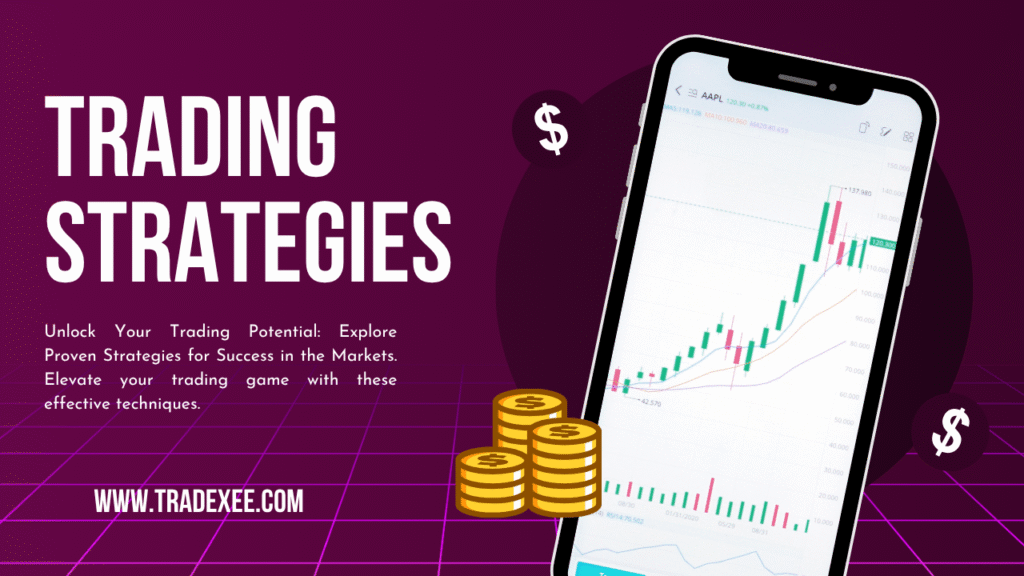Introduction: Forex Trading for Beginners
If you’ve ever wondered how people make money by buying and selling currencies online, you’re in the right place. This complete guide on how to start forex trading will walk you through every step of getting started—from choosing a broker to executing your first trade.
Forex (short for foreign exchange) is the world’s largest financial market, with over $7.5 trillion traded daily. The best part? You don’t need a finance degree or thousands of dollars to join. With the right mindset, tools, and guidance, anyone can learn how to start forex trading—even total beginners.
Let’s dive in and unlock the fundamentals of how to start forex trading smartly and confidently.
What is Forex Trading?
At its core, how to start forex trading means exchanging one currency for another to make a profit. For example, if you believe the euro will rise against the U.S. dollar, you’d buy EUR/USD. If it goes up, you profit. If it goes down, you lose.
Unlike stocks, the forex market is open 24 hours a day, five days a week. That gives you flexibility to trade before or after work—a key reason many want to learn how to start forex trading part-time.
Key Forex Market Features:
- Leverage: Small capital can control large positions.
- Liquidity: Easily buy/sell major currency pairs anytime.
- Volatility: Price movements create profit (and loss) opportunities.
How Does Forex Trading Work?
If you’re learning how to start forex trading, it’s crucial to understand how currency pairs function. Currencies are traded in pairs (like USD/JPY or GBP/USD), where the first currency is the “base” and the second is the “quote.” You’re betting on whether the base currency will rise or fall relative to the quote.
Example:
If you buy EUR/USD at 1.1000 and it rises to 1.1050, you earn 50 pips.
Common Currency Pairs:
- Major Pairs – EUR/USD, GBP/USD, USD/JPY
- Minor Pairs – EUR/GBP, AUD/NZD
- Exotic Pairs – USD/TRY, EUR/ZAR
Step 1: Choose a Reliable Forex Broker
A big part of how to start forex trading successfully is choosing the right broker.
What to Look For:
- Regulation by bodies like FCA (UK), NFA (US), or ASIC (Australia)
- Low spreads and fast execution
- Beginner-friendly platform (e.g., MetaTrader 4 or 5)
- Demo account availability
Trusted Brokers for Beginners:
- OANDA
- IG Group
- Forex.com
✅ Pro Tip: Tradexee is an excellent starting point for education, tools, and insights on how to start forex trading.
Step 2: Learn to Read Forex Charts
Charts are the language of the market. If you’re serious about how to start forex trading, understanding chart patterns is essential.
Types of Charts:
- Line Chart: Basic price trends
- Bar Chart: Shows open, high, low, close
- Candlestick Chart: Visualizes market psychology
Key Indicators:
- Moving Average
- Relative Strength Index (RSI)
- MACD (Moving Average Convergence Divergence)
📘 Learn more via Investopedia’s Forex Guide
Step 3: Understand Leverage and Risk
When exploring how to start forex trading, you’ll hear a lot about leverage.
What Is Leverage?
Leverage allows you to trade large positions with a small deposit. For instance, 100:1 leverage means $100 can control $10,000.
But beware: Higher leverage = higher risk.
⚠️ Rule of Thumb: Never risk more than 1–2% of your account per trade.
Risk Management Tools:
- Stop-loss orders
- Take-profit levels
- Risk/reward ratio
Step 4: Practice with a Demo Account
Still unsure about how to start forex trading? Start with a demo account. Most brokers offer one for free, using virtual money to simulate real trading conditions.
🛠️ Pro Tip: Practice for at least 30 days before going live.
Step 5: Develop a Simple Trading Strategy
Strategy is everything in trading. Part of how to start forex trading smartly is not trading blindly but with a plan.
Example Beginner Strategy: Moving Average Crossover
- Use 50 EMA and 200 EMA.
- Buy when 50 crosses above 200 (golden cross).
- Sell when 50 crosses below 200 (death cross).
Other Starter Strategies:
- Breakout trading
- Range trading
- Trend following
Backtest your strategy before going live. A key lesson in how to start forex trading successfully.
Real-Life Example: Emma’s First Month in Forex
Emma, a 29-year-old teacher from New Zealand, wanted to learn how to start forex trading to create an extra income stream. She began with just $200 and practiced on a demo account for three weeks. After that, she used a breakout strategy on EUR/USD.
She placed 12 trades in her first month and ended with a 6% gain—not life-changing, but a solid, confidence-building start.
Her top lessons?
- Always use a stop-loss
- Avoid overtrading
- Keep a trading journal
Common Mistakes Beginners Make
Learning how to start forex trading also means avoiding these beginner pitfalls:
- Overleveraging – Too much risk, too soon
- Emotional Trading – Chasing losses ends badly
- Ignoring News Events – Big announcements move markets fast
- No Plan – Random trades = random results
How to Succeed in Forex Trading
Consistency is more important than flashy wins.
Build Good Habits:
✅ Set Realistic Goals
✅ Study Daily
✅ Journal Every Trade
✅ Stay Updated via DailyFX and FXStreet
Key Forex Terms for Beginners
| Term | Meaning |
|---|---|
| Pip | Smallest price movement |
| Lot | Standard trade size (100,000 units) |
| Spread | Difference between bid and ask |
| Margin | Funds needed to open a position |
| Drawdown | Loss from a peak before recovery |
Advanced Tips for Beginners
Once you master how to start forex trading, consider these upgrades:
✅ Dollar-Cost Averaging
✅ Multiple Timeframe Analysis
✅ Trading Major News Events
✅ Join Forex Communities like r/forex or Telegram groups
FAQs: How To Start Forex Trading
Q1: How much money do I need to start forex trading?
You can begin with as little as $100, though most brokers recommend $500+.
Q2: Is forex trading legal?
Yes—in most countries. Just use a regulated broker.
Q3: Can I make a living from forex trading?
Yes, but it takes time, discipline, and proper strategy.
Q4: What’s the best platform to start forex trading?
MetaTrader 4 is widely recommended. Or visit Tradexee for educational tools.
Q5: How do I know when to buy or sell?
Use chart patterns, indicators, and manage risk wisely.
Final Thoughts: Ready to Start Your Journey?
Knowing how to start forex trading is the first step. Doing it consistently with discipline is the key to success. Start small, focus on learning, and never risk money you can’t afford to lose.
Want a head start? Visit Tradexee for tools, broker recommendations, and beginner-friendly guides to help you on your forex journey.



Pingback: Digital Marketing Strategist: 7 Powerful Reasons You Can’t Afford to Ignore One